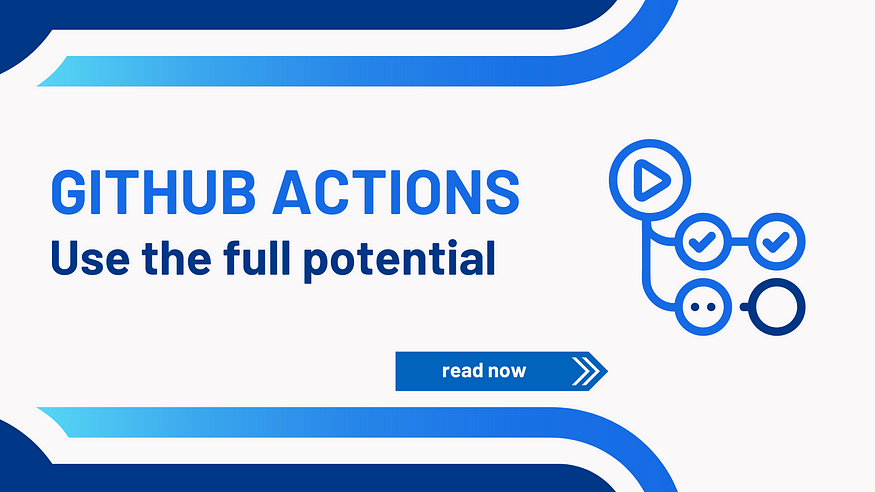Mastering Effortless Development: GitHub Actions Unveiled🚀

Demystifying CI/CD: Streamlining Development with GitHub Actions ✨
In the fast-paced world of software development, efficiency is key. Developers are constantly seeking tools and methodologies that can accelerate their workflows, enhance collaboration, and ensure the delivery of high-quality code.
Enter Continuous Integration and Continuous Delivery (CI/CD) platforms — the backbone of modern software engineering.
In this article, we’ll take a deep dive into one such CI/CD platform that has been gaining significant traction: GitHub Actions. 🚀
Unveiling GitHub Actions
At its core, GitHub Actions is a CI/CD platform seamlessly integrated with GitHub repositories.
It automates a slew of essential tasks ranging from building and testing to deploying code.
The standout feature? It’s tailor-made for simplicity and convenience, eliminating the need for third-party tools that often complicate the development process. 🤖
Imagine a world where repetitive, time-consuming tasks are handled by the platform itself. That’s the power GitHub Actions brings to the table. It doesn’t just save time; it supercharges productivity by allowing developers to focus on what truly matters — writing impeccable code. 💡
Flexibility at Its Best
One of the most remarkable aspects of GitHub Actions is its versatility. Regardless of your programming language or framework, this platform can seamlessly integrate into your workflow.
Whether you’re a Pythonista, a JavaScript guru, or a Java aficionado, GitHub Actions has your back. 💪
Getting Started
Setting up GitHub Actions is a breeze. Just follow these simple steps:
- Create a GitHub repository.
- Add a
.githubfolder at the root level of your repository. - Inside the
.githubfolder, create aworkflowsfolder. - Craft a YAML file within the
workflowsfolder to kickstart your automation journey. 📦

The Core Concepts
To wield GitHub Actions effectively, let’s acquaint ourselves with its foundational concepts:
Workflows: The Blueprint for Automation
Think of workflows as choreographed sequences of automated steps. These steps outline how your code is built, tested, and ultimately deployed. By defining workflows, you’re orchestrating a symphony of automation that ensures consistent and reliable results. 🎵

Jobs: Units of Execution
Jobs are the workhorses of a workflow. They run concurrently and independently, each executing a distinct unit of work. These units can comprise multiple steps, facilitating the execution of specific tasks. The parallel execution of jobs turbocharges the overall speed of your automation. 🏃♂️

Steps: Constructing Actions
Steps are the building blocks that constitute a job.
Each step represents a discrete action or command that contributes to the completion of the job. Whether it’s running scripts or invoking predefined actions, steps empower you to wield fine-grained control over your automation process. 🔧

Actions: The Automation Arsenal
Imagine actions as prepackaged units of code that promote reusability. These reusable code units can be harnessed across various workflows, sparing you the effort of reinventing the wheel. Actions encompass an array of automation possibilities, rendering your workflows sleek and efficient. 🛠️

Triggers and Events: Precision Timing
Triggers serve as the triggers, no pun intended, for your workflows. They dictate when a workflow should kick into action, based on specific events. These events might encompass actions like code pushes, pull requests, or scheduled intervals. Triggers enable your automation to align seamlessly with the pace of development. ⏰

Safeguarding Secrets
Security is paramount, especially when dealing with sensitive data. GitHub Actions offers a robust solution by allowing you to store sensitive information as environment variables within your repository. This approach ensures that your confidential data remains protected from prying eyes. 🔒

Collaboration Made Effortless
Why reinvent the wheel when you can ride on the wheels of others? GitHub Actions promotes collaboration and code reuse through its extensive library of ready-made actions. Harness the power of these actions to expedite your automation journey.
Alternatively, if you’re a code virtuoso, construct custom actions using the Actions Toolkit. 🤝
The Grand Finale
With your setup complete and your workflows configured, there’s only one thing left to do — push! By simply pushing your code to the repository, you set the magic of GitHub Actions in motion.
Watch as your automation unfolds, transforming your development process into a streamlined symphony of efficiency. 🎶
In the world of software development, GitHub Actions emerges as a guiding light, simplifying the complexities of CI/CD.
Its user-friendly interface, customization capabilities, and integration prowess make it an indispensable tool for any developer seeking to amplify productivity and ensure code excellence.
So, don’t shy away from embracing the power of automation — embark on your GitHub Actions journey today and witness the transformation firsthand. 🌟


No comments